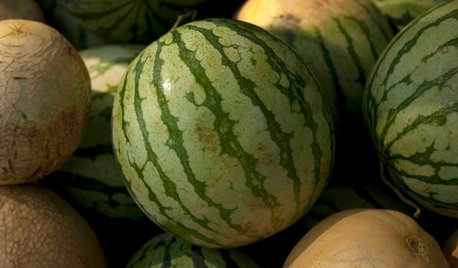Composted/Rotted Horse Manure For Hot Peppers?
sidhartha0209
11 years ago
Related Stories

GARDENING GUIDESGet on a Composting Kick (Hello, Free Fertilizer!)
Quit shelling out for pricey substitutes that aren’t even as good. Here’s how to give your soil the best while lightening your trash load
Full Story
FEEL-GOOD HOME21 Ways to Waste Less at Home
Whether it's herbs rotting in the fridge or clothes that never get worn, most of us waste too much. Here are ways to make a change
Full Story
GARDENING GUIDESHouzz TV: Make a Worm Bin for Rich Soil and Happy Plants
A worm-powered compost bin that can fit under a sink turns food scraps into a powerful amendment for your garden. Here’s how to make one
Full Story
GARDENING GUIDESLush, Foodie Abundance in a Small Urban Garden
This modest backyard garden provides its owner with fruit and vegetables all year round, thanks to an innovative low-maintenance approach
Full Story
FARM YOUR YARDHow to Build a Raised Bed for Your Veggies and Plants
Whether you’re farming your parking strip or beautifying your backyard, a planting box you make yourself can come in mighty handy
Full Story
EDIBLE GARDENSSummer Crops: How to Grow Tomatoes
Plant tomato seedlings in spring for one of the best tastes of summer, fresh from your backyard
Full Story
GARDENING GUIDESEssential Watering Tips for Your Edible Garden
To give your edible plants just what they need, check out these guidelines for how, when and how much to water
Full Story
EARTH DAYThe Case for Losing the Traditional Lawn
Work less, help the environment and foster connections by just saying no to typical turf
Full Story
GARDENING AND LANDSCAPINGWorld of Design: 10 Home Gardeners Show Us Their Sweet Summer Harvests
From New York to Tokyo, these gardeners have turned their yards, terraces and rooftops into places of bounty
Full Story
GARDENING GUIDESSummer Crops: How to Grow Melons
Drink in the refreshing sweetness of melons from your own garden this summer — they can last well into fall too
Full StorySponsored






mbellot
habjolokia z 6b/7
Related Professionals
Forest Acres Landscape Architects & Landscape Designers · Fort Lee Landscape Architects & Landscape Designers · Ilchester Landscape Architects & Landscape Designers · Maple Valley Landscape Contractors · Barrington Landscape Contractors · Bedford Landscape Contractors · Clark Landscape Contractors · College Park Landscape Contractors · Columbine Landscape Contractors · Florham Park Landscape Contractors · Fruit Heights Landscape Contractors · Longview Landscape Contractors · Pompton Lakes Landscape Contractors · San Pedro Landscape Contractors · Greenfield Landscape Contractorsrick_in_va
tsheets
fusion_power
sidhartha0209Original Author
reginald_317
sidhartha0209Original Author